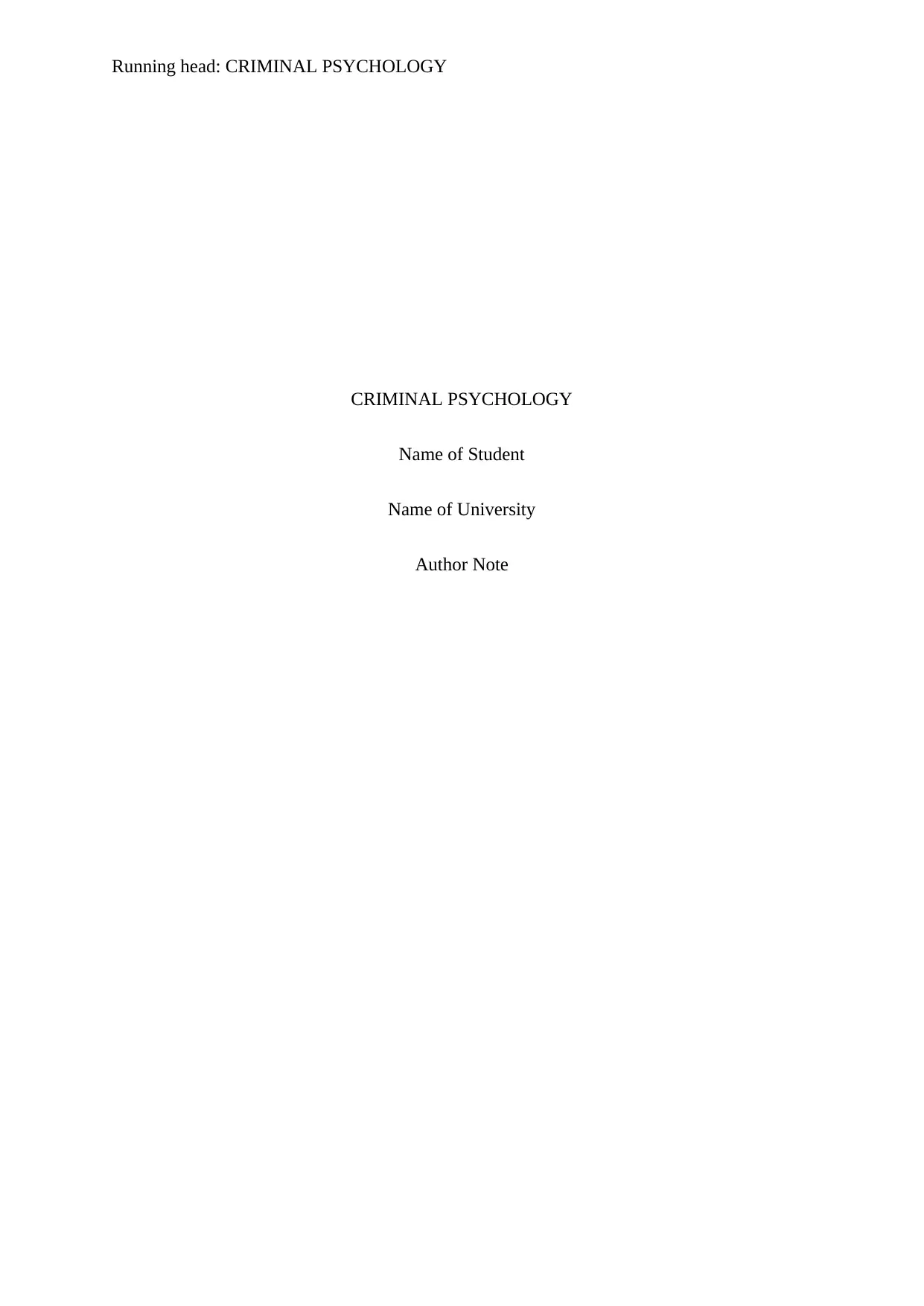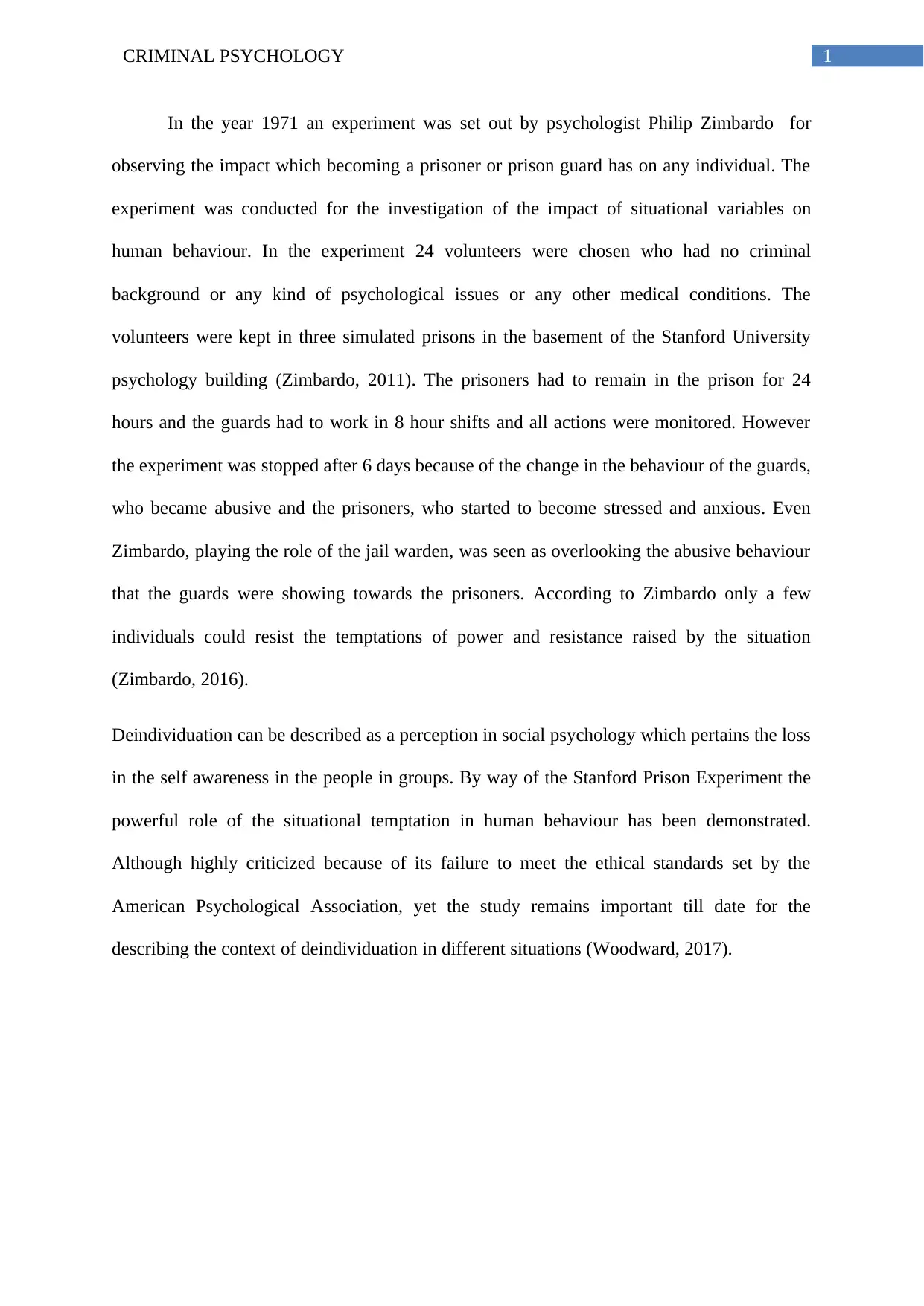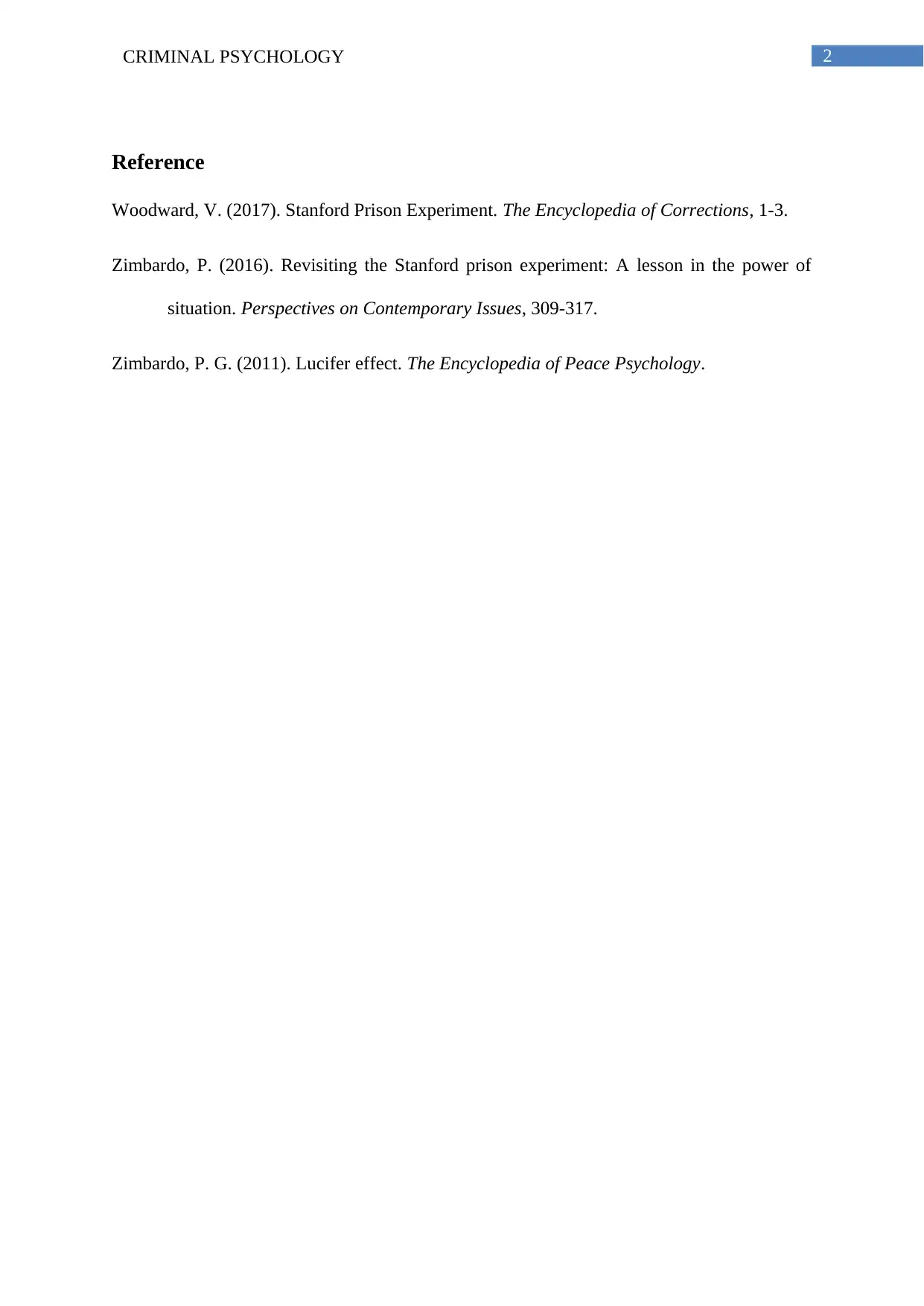CJ400 Criminal Psychology Report: Biological Factors & Learning
VerifiedAdded on 2022/08/25
|3
|378
|19
Report
AI Summary
This report examines key concepts in criminal psychology, drawing upon the Stanford Prison Experiment to illustrate the impact of situational variables on human behavior. The report explores the experiment's methodology, findings, and ethical considerations, highlighting the roles of deindividuation and the 'Lucifer Effect' in shaping behavior. Furthermore, the report delves into biological and learning factors that influence criminal behavior, including trait theory, sociobiology, and social learning theories such as those of Skinner, Bandura, Sutherland, and Akers. It provides a comprehensive overview of how both innate characteristics and environmental influences contribute to the development of antisocial behavior, emphasizing the importance of understanding individuals as active problem solvers within their environments. The report also references the course material from CJ400, including the discussion of criminal behavior from the perspective of social process and the concepts of positive and negative reinforcement, vicarious reinforcement, and punishment.
1 out of 3







![[object Object]](/_next/static/media/star-bottom.7253800d.svg)